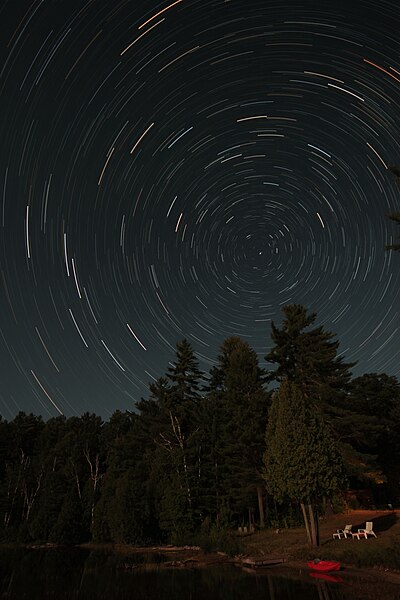The north and south celestial poles are the two points in the sky where Earth's axis of rotation, indefinitely extended, intersects the celestial sphere. The north and south celestial poles appear permanently directly overhead to observers at Earth's North Pole and South Pole, respectively. As Earth spins on its axis, the two celestial poles remain fixed in the sky, and all other celestial points appear to rotate around them, completing one circuit per day.
Over the course of an evening in the Northern Hemisphere, circumpolar stars appear to circle around the north celestial pole. Polaris (within 1° of the pole) is the nearly stationary bright star just to the right of center in this star trail photo.
The south celestial pole over the Very Large Telescope
In astronomy and navigation, the celestial sphere is an abstract sphere that has an arbitrarily large radius and is concentric to Earth. All objects in the sky can be conceived as being projected upon the inner surface of the celestial sphere, which may be centered on Earth or the observer. If centered on the observer, half of the sphere would resemble a hemispherical screen over the observing location.
Celestial globe by Jost Bürgi (1594)



